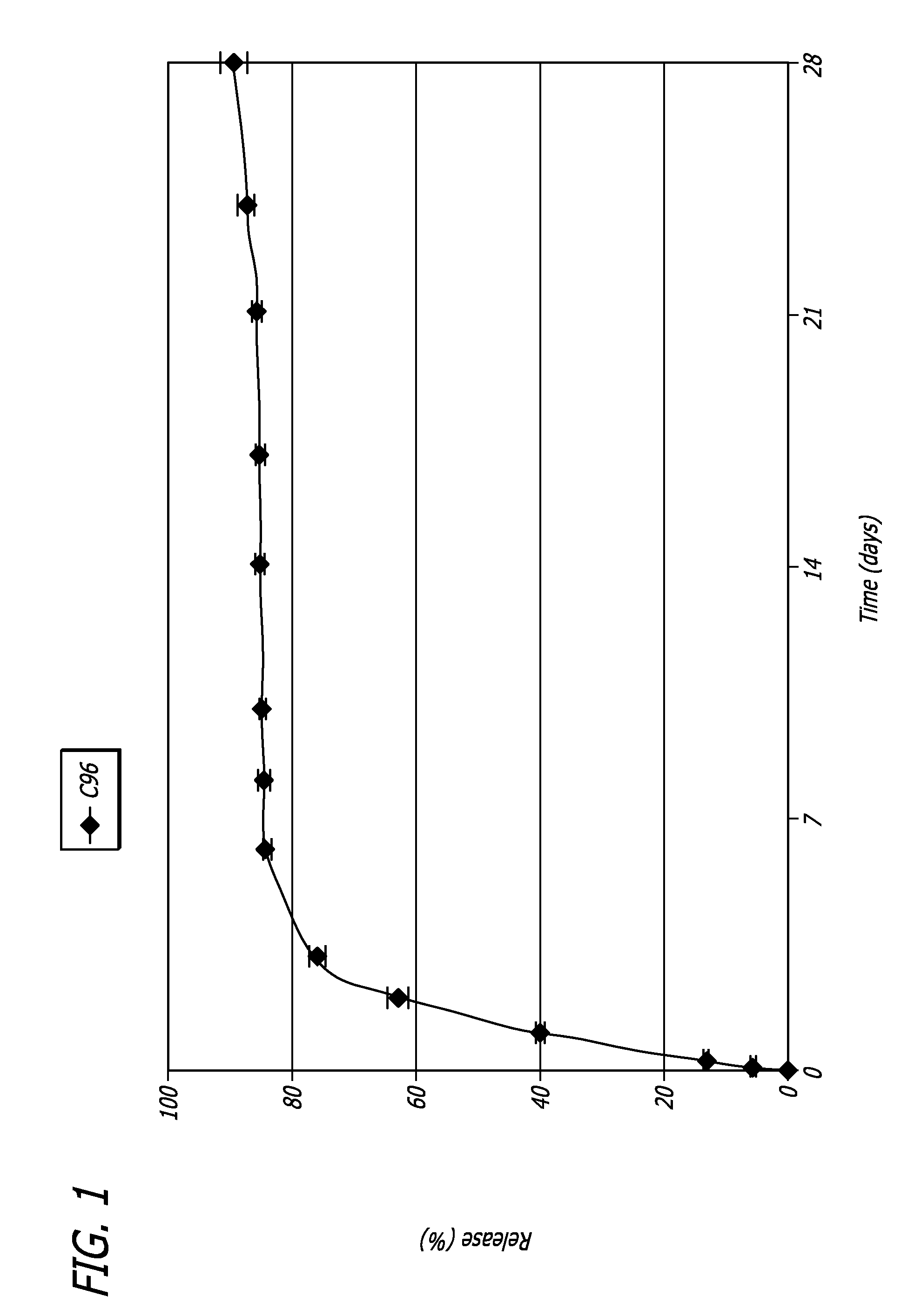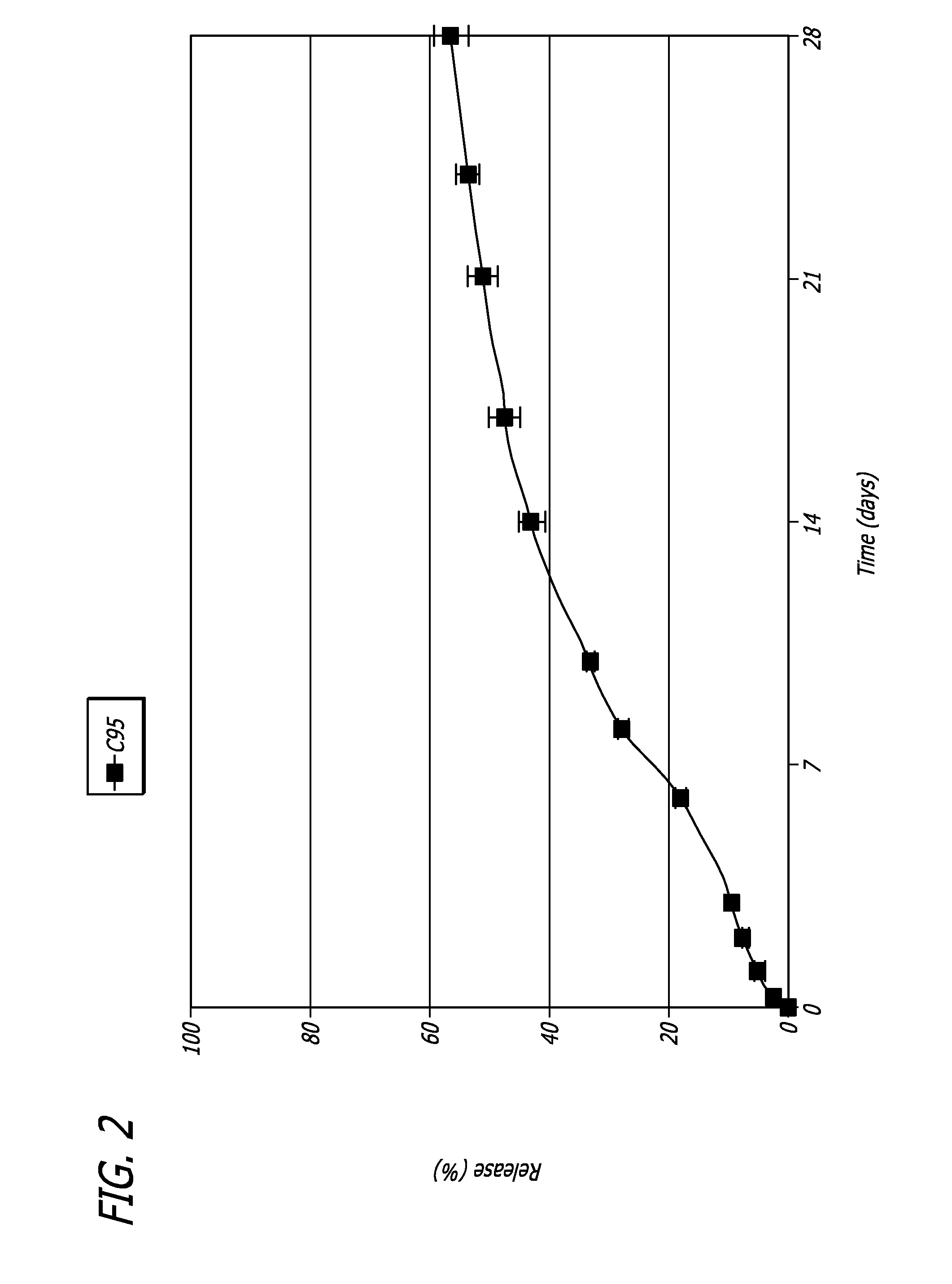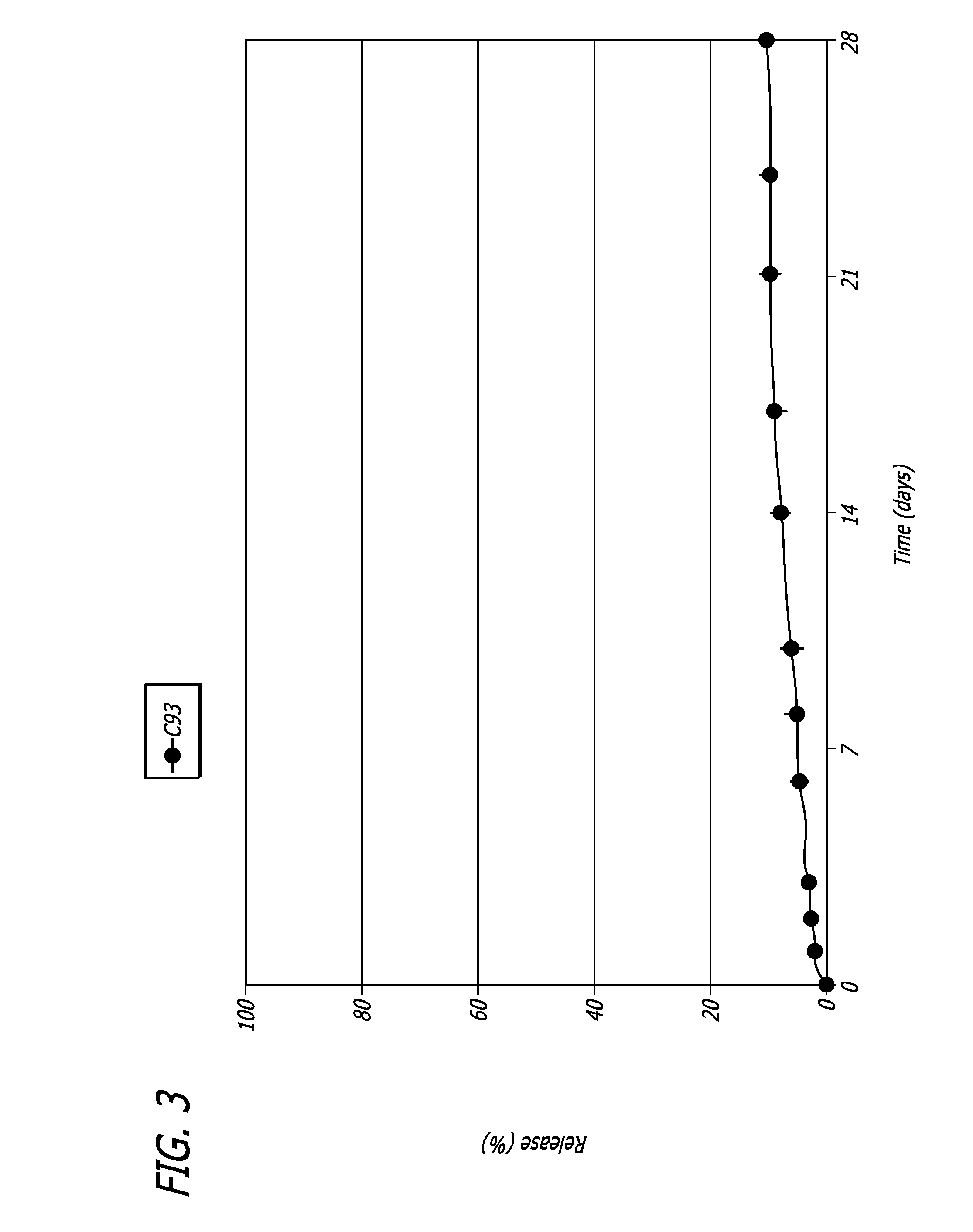Durable Biocompatible Controlled Drug Release Polymeric Coatings for Medical Devices
a biocompatible, controlled drug technology, applied in the direction of prosthesis, catheter, surgery, etc., can solve the problems of toxic anti-inflammatory and anti-proliferative compounds, vsmc proliferation and neointimal formation within the previously opened artery, and the design of polymer coatings for medical devices has proved problematic, so as to achieve a steady release rate and release rate
- Summary
- Abstract
- Description
- Claims
- Application Information
AI Technical Summary
Benefits of technology
Problems solved by technology
Method used
Image
Examples
example 1
[0057] The synthesis of a monomer having Formula 2 where A is H and n is about 350 is described.
[0058] To a solution of acrylic acid (72 g, 1 mol) in tetrahydrofuran (200 mL) is added a 500 mL MPEG (n about 350) solution (in water, d=1.088 g / ml). Then p-tolusulfonic acid (1g, 0.005 mol) is added to the mixture and the esterification reaction started under vacuum (about 30 torr). Once the reaction is completed the monomers are harvested by evaporating the tetrahydrofuran.
example 2
[0059] The synthesis of a copolymer comprising the monomers 2-ethoxyethyl methacrylate and hexyl methacrylate is described.
[0060] To a solution of 2-ethoxyethyl methacrylate (10 g, 0.06 mol) in 2-butanone (14 mL) and n-propyl alcohol (6 mL) is added hexyl methacrylate (10.08 g, 0.06 mol) and the initiator azobisisobutyronitrile (160 mg). The reaction mixture is stirred for 5 hours at 60° C. Once the reaction is completed the polymer is precipitated in cold methanol (−60° C.) and re-dissolved in chloroform. This purification is repeated three times. The final purified polymer is harvested by evaporating the solvents.
example 3
[0061] The coating of a vascular stent with drug impregnated polymers is described.
[0062] To a solution of coating polymer, for example, the polymer of Example 2, and rapamycin in tetrahydrofuran is added a vascular stent. The vascular stent is removed and allowed to dry, the solvent evaporated. A drug eluting stent is presented. The controlled release polymeric coatings of the present invention can be applied to medical device surfaces, either primed or bare, in any manner known to those skilled in the art. Applications methods compatible with the present invention include, but are not limited to, spraying, dipping, brushing, vacuum-deposition, and others. Moreover, the controlled-release coatings of the present invention may be used with a cap coat. A cap coat as used here refers to the outermost coating layer applied over another coating. A drug-releasing copolymer coating is applied over the primer coat. A polymer cap coat is applied over the drug-releasing copolymer coating. T...
PUM
| Property | Measurement | Unit |
|---|---|---|
| Tg | aaaaa | aaaaa |
| Tg | aaaaa | aaaaa |
| temperature | aaaaa | aaaaa |
Abstract
Description
Claims
Application Information
 Login to View More
Login to View More - R&D
- Intellectual Property
- Life Sciences
- Materials
- Tech Scout
- Unparalleled Data Quality
- Higher Quality Content
- 60% Fewer Hallucinations
Browse by: Latest US Patents, China's latest patents, Technical Efficacy Thesaurus, Application Domain, Technology Topic, Popular Technical Reports.
© 2025 PatSnap. All rights reserved.Legal|Privacy policy|Modern Slavery Act Transparency Statement|Sitemap|About US| Contact US: help@patsnap.com



